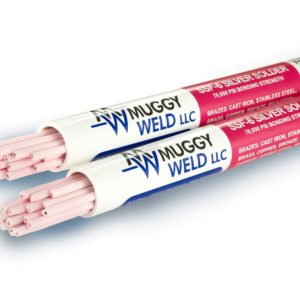Brazing steel to a variety of metals is an easy task for SSF-6 56% silver solder. SSF-6 is a flux-coated brazing rod that flows in all positions at only 1150°F. Its high silver content creates some of the strongest bonds in the maintenance welding industry: 70,000 psi. Cadmium-free SSF-6 is restaurant and hospital safe and can be utilized in either industry without worry of contamination.
For this video, we demonstrate SSF-6’s superior flow by brazing a piece of brass tubing to a small piece of square steel. Propane was used for this application, due to the small size of the parent metal pieces. Brazing larger or thicker metals will require a torch capable of bringing the base metal temperature to its 1150°F working temperature (MAPP or oxyacetylene is recommended for large/thick parts).
Begin by using the torch to preheat the base metal to a dull red, indicating the proper working temperature. When you notice this transformation, it’s time to apply the flux from the brazing rod by gently heating the flux until it melts into the joint. Continue moving the torch to avoid melting or overheating the base metals, and to flow the flux completely into the steel joint. Be sure to focus the heat on the larger/thicker piece.
Add a small amount of silver brazing rod to the joint, and use the heat of the torch to flow it around the entire joint. 1 inch of silver solder will flow up to 18 inches with no pinholes, no porosity. Excess flux is removed with a wire brush and warm water–no chemicals required.
SSF-6’s flux wets the steel and brass, and no finishing work is required because this brazing rod has an outstanding finish. SSF-6 brazing rod produces electrically conductive, corrosion-resistant, leak tight joints. This same technique can be used to join a variety of metals: steel, cast iron, copper, silver, bronze, brass, stainless and more.
Note: Please observe all AWS Safety & Health Guidelines when using Muggy Weld products.

